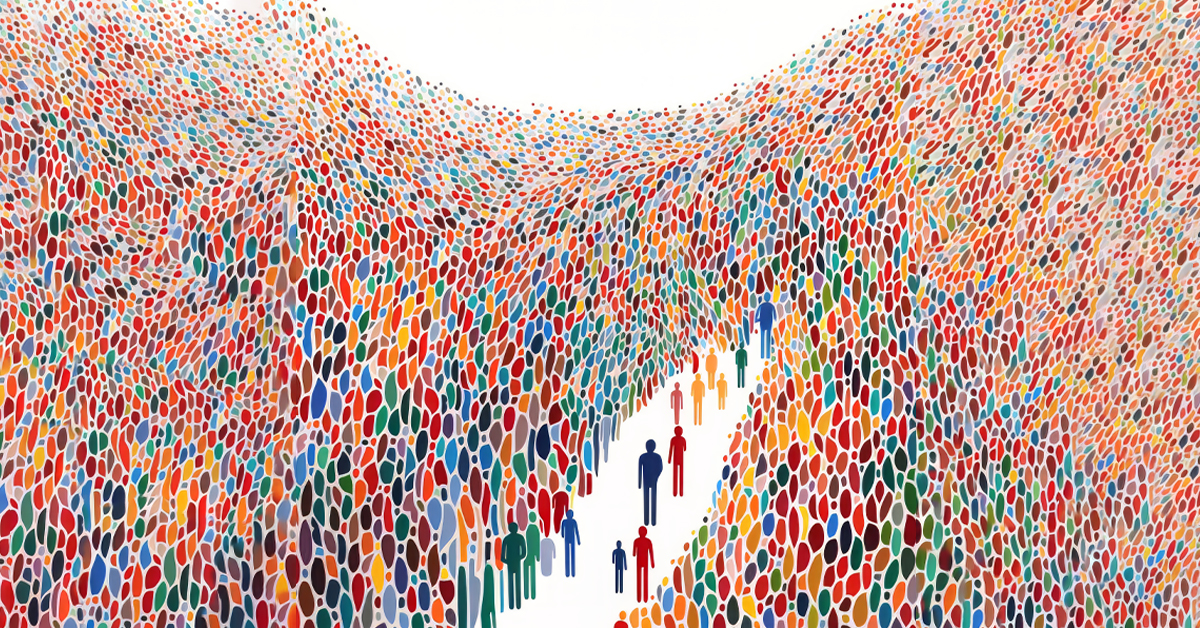

Into the Unknown – Rare Diseases, an Uncharted Territory
29th Feb, 2024
Rare diseases, despite their rarity, collectively affect millions of lives worldwide. Defined by various parameters such as prevalence and study-ability, these conditions pose unique challenges in diagnosis, treatment, and support. In India, addressing rare diseases requires a nuanced understanding of their prevalence and the hurdles faced by patients and healthcare providers alike.
Defining Rare Diseases: A Global Perspective
The World Health Organization (WHO) characterizes rare diseases as often debilitating conditions with a prevalence of 1 or less per 1000 population. However, definitions vary across countries to align with their specific healthcare landscapes. In the United States, rare diseases are those affecting fewer than 200,000 patients, while the European Union sets the threshold at 5 in 10,000 people. Japan identifies rare diseases based on prevalent cases, with fewer than 50,000 cases considered rare.
However, relying solely on prevalence to define rarity has its limitations. Factors like location, levels of rarity, and study-ability also play crucial roles. Diseases uncommon in one country may be prevalent elsewhere, and some conditions may be significantly rarer than others despite both being classified as uncommon. There are between 7000 – 8000 rare diseases, but less than 5% have therapies available to treat them. About 95% of rare diseases have no approved treatment and less than 1 in 10 patients receive disease-specific treatment.
Rare Diseases in India: Prevalence and Recognition
In India, the prevalence and recognition of rare diseases are evolving. While globally recognized rare diseases number in the thousands, only a limited number have been documented in India, primarily through tertiary care hospitals. Commonly reported rare diseases include Primary Immunodeficiency Disorders, Lysosomal Storage Disorders (such as Gaucher’s disease and Pompe disease), small molecule Inborn Errors of Metabolism (like Maple Syrup Urine Disease and Organic Acidemias), Cystic Fibrosis, Osteogenesis Imperfecta, and certain forms of Muscular Dystrophies and Spinal Muscular Atrophy.
Challenges Faced in Addressing Rare Diseases
In the context of rare diseases, two significant challenges often arise. Firstly, there is a notable delay in the diagnosis due to patients’ lack of awareness or negligence in seeking medical attention. Secondly, healthcare professionals encounter challenges in promptly recognizing and diagnosing rare diseases, largely due to limited prevalence and awareness surrounding these conditions.
Even after a diagnosis is reached, accessing appropriate treatment presents another hurdle. Many rare diseases lack specific treatments, and those that do exist are often exorbitantly priced, placing them out of reach for the majority of patients in a country like India where healthcare expenses can quickly become a financial burden.
Living with a rare disease can be isolating, compounding the challenges faced by patients and families.
The Path Forward: Advocacy and Awareness
Addressing the issues surrounding rare diseases in India requires a multi-faceted approach. Firstly, there is a need for increased awareness among healthcare professionals to expedite diagnosis and ensure appropriate management. This includes integrating education on rare diseases into medical curricula and providing continuous training opportunities.
Equally vital is the dissemination of knowledge among the general populace. Public awareness campaigns, leveraging various platforms and media, serve to educate communities about the signs and symptoms of rare diseases. Collaborations with influential figures and community leaders amplify these efforts, ensuring widespread understanding and prompt action in seeking medical assistance.
Government support is pivotal in boosting awareness initiatives. Allocating resources for awareness campaigns and enacting policies mandating rare disease education in schools can empower individuals to recognize and respond to these conditions proactively.
Furthermore, efforts must be made to improve access to treatment. This could involve government intervention to subsidize the cost of medications, as well as incentivizing pharmaceutical companies to invest in research and development for rare diseases.
Additionally, fostering a supportive environment for individuals with rare diseases and their families is crucial. This involves creating dedicated support groups, both online and offline, where individuals can connect with others facing similar challenges and share experiences and resources.
While rare diseases may individually affect a small portion of the population, their collective impact is significant. In India, as in other parts of the world, addressing the challenges associated with rare diseases requires concerted efforts from healthcare professionals, policymakers, and society as a whole. 29th February, marks Rare Disease Day, let’s come together to make an effort to raise awareness and advocate for the needs of those living with rare diseases. By raising awareness, improving access to treatment, and fostering supportive communities, we can strive to improve the lives of those affected by rare diseases and ensure that no one is left behind.

